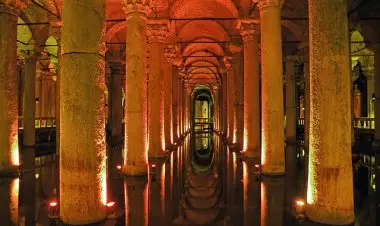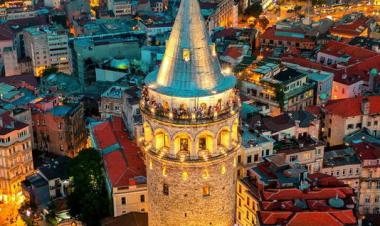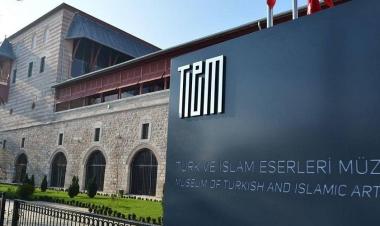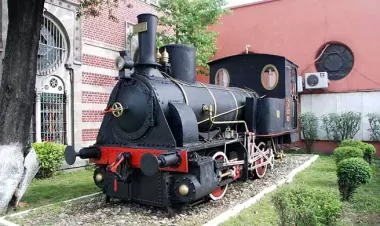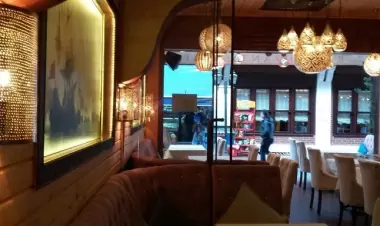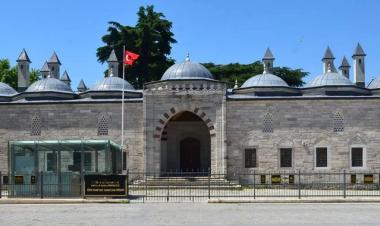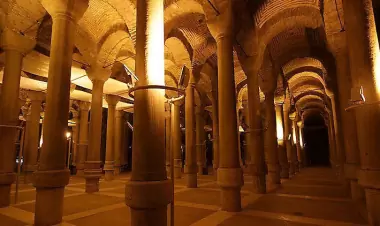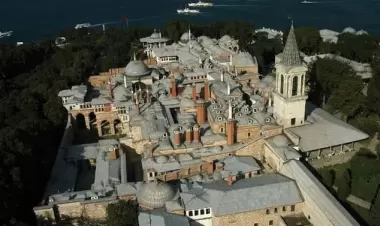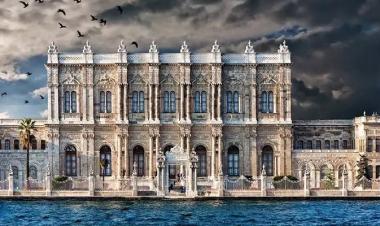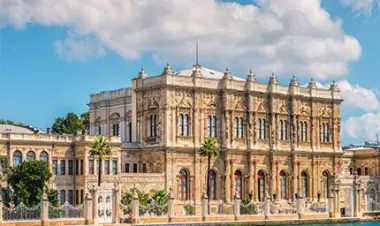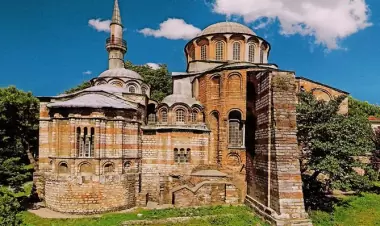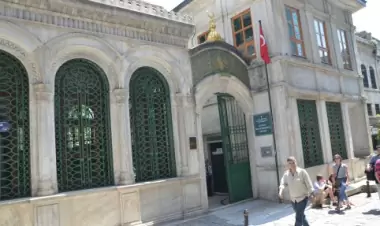Istanbul Archaeology Museum

Istanbul Archeology Museum:A Guide to Exploring Ancient Artifacts

The Istanbul Archeology Museum houses more than one million artifacts that span 5,000 years of human history. It ranks among the world's leading archeological institutions. Its treasures include the Alexander Sarcophagus and the oldest known peace treaty. Each artifact reveals stories of civilizations that shaped our modern world.
Three separate buildings make up the Istanbul archeology museums complex. You'll find fascinating exhibits from ancient Mesopotamia, Egypt, and the classical world. This piece will help you explore the museum's big collections. History buffs and curious travelers will discover the best ways to experience this remarkable institution.
Essential Visitor Information

The Istanbul archeology museum complex sits in the historic Sultanahmet neighborhood between the first courtyard of Topkapi Palace and Gülhane Park, waiting for you to explore.
Location and Getting There

You'll find the museum complex on the Osman Hamdi Bey slope that connects Gülhane Park with the Topkapı Palace Museum. The complex is easy to reach by these routes:
Take the T1 tram line to Gülhane station
Walk down the slope from Topkapı Palace's first court
Enter through Gülhane Park's main gate and walk uphill
Opening Hours and Ticket Prices

The museum adjusts its hours based on seasonal visitor patterns:
Season | Period | Hours |
Summer | April 1 - October 31 | 9:00 AM - 7:30 PM |
Winter | November 1 - March 31 | 9:00 AM - 5:30 PM |
Adult tickets cost 340 Turkish Lira (about USD 13.00). Kids under eight can enter free. The Istanbul E-pass gives you special rates and includes a guided tour with your entrance ticket.
Best Times to Visit
Your experience at the museum changes substantially based on when you visit. Here's what you should know:
Spring (March-May) and Autumn (September-November) give you the best weather to explore the museum complex. These seasons also tend to have fewer tourists than summer months.
Summer visitors (June-August) should plan their visits early morning or late afternoon. This helps you avoid the heat and crowds. July and August bring peak tourist numbers to the museum.
Winter months (December-February) are a chance to see the collections without crowds. The museum stays comfortable inside even when it's chilly or rainy outside.
The museum currently has several closed areas for renovation. These include Halls 1, 16-20 on the lower floor and some upper floor sections. Plan your route to make the most of the available collections.
Historical Evolution of the Museum

The Istanbul archeology museums' rich history dates back to Sultan Mehmet the Conqueror's reign, when collecting historical artifacts became a royal pursuit. This remarkable institution's development spans centuries of careful preservation and cultural appreciation.
From Royal Collection to Public Museum
The museum's story begins in the Hagia Irene Church, which served as the Ottoman Empire's first collection point for historical artifacts. In 1869, the institution officially became Müze-i Hümayun (Imperial Museum), Turkey's first formal museum. A defining moment arrived in 1881 when Osman Hamdi Bey took over as director. He revolutionized Turkish museology through archeological expeditions and discoveries, which included the renowned Alexander Sarcophagus from Sidon.
Architectural Heritage
The museum complex features three distinct buildings with unique architectural significance:
Building Year | Architectural | Significance |
Tiled Kiosk | 1472 | Oldest structure, Persian-influenced design |
Ancient Orient Museum | 1883 | Originally the first Ottoman fine arts academy |
Classical Building | 1891 | Neo-classical masterpiece by Alexandre Vallaury |
Mehmet the Conqueror commissioned the Tiled Kiosk, which showcases distinctive Persian facades and polygonal pillars. The building's entrance features a 14-column marble arcade decorated with intricate mosaic tiles that represent Ottoman architecture's finest craftsmanship.
Recent Renovations and Updates
The museum has undergone major transformations since 2012 to meet contemporary standards:
Implementation of state-of-the-art display environments featuring:
Advanced lighting systems
Digital applications
Modern storytelling techniques
The renovation project added 5,000 new artifacts to the exhibition halls, including coins, sculptures, and ceramics. These modernization efforts created harmonious exhibition spaces while preserving the museum's historical character. Work continues on the Ancient Orient Museum and Tiled Kiosk Museum sections, ensuring this cultural treasure remains pioneering among world-class scientific museums.
Main Building Highlights

The grand halls of the main building house one of the world's most complete collections of classical antiquities. The collection spans from the Archaic period to the Byzantine era.
Classical Antiquities Collection
The ancient sculpture collection shows the development from rigid Archaic forms to the Classical period's naturalistic style. Spectacular Greco-Roman sculptures date from the 6th century BCE to the 2nd century CE. The funeral statuary changed from impersonal kouros figures to intimate family groups that defined the Classical period.
Period | Key Features | Notable Examples |
Archaic | Rigid poses, formal style | Early kouros figures |
Classical | Natural poses, idealized forms | Athena with Peplos |
Hellenistic | Dynamic movement, emotional expression | Alexander portraits |
Roman and Byzantine Artifacts
Roman artistic achievements shine through the collection from the empire's golden age (27 BCE - 180 CE). Exceptional pieces include:
Imperial portraits and busts that showcase Roman leadership
Architectural elements from major Roman structures
Decorative arts that reflect daily life in the empire
The Byzantine section features stunning mosaics. The celebrated Four Seasons mosaic shows seasonal personifications around a central heroic figure. These pieces showcase the sophisticated artistic traditions that thrived in Constantinople.
Notable Sculptures and Statues
The impressive statue of Emperor Hadrian stands out among the masterpieces. He wears military attire and steps on a barbarian figure. His armor's intricate reliefs tell Rome's founding story through the she-wolf nursing Romulus and Remus.
The collection has remarkable Olympian deity representations. Troy's Acropolis yielded the Head of Zeus, which shows divine authority with expert craftsmanship. The Apollo statue holds a lyre, showing the god's connection to music and healing.
The museum's finest Hellenistic sculptures come from Aphrodisias and other major ancient cities. These pieces show ancient sculptors' technical mastery, especially in drapery and emotional expression.
The sculpture gallery features unique works like the Tykhe statue. The goddess of fortune carries Plutos, wealth's symbol. The elegant Ephebe statues offer glimpses into ancient Greek athletic education and cultural ideals.
Ancient Orient Museum Treasures

The Ancient Orient Museum holds some of humanity's earliest cultural achievements. Its remarkable collection shows how civilization changed over time.
Mesopotamian Artifacts
The museum's Mesopotamian history comes alive through 10,000 pieces from legendary sites like Assur, Nippur, and Nineveh. Original glazed brick fragments from the Gate of Ishtar stand as the collection's centerpiece. These pieces show magnificent bulls and dragons that represent the Babylonian god Marduk. Azure-blue tiles adorned with lions symbolize the goddess Ishtar and give visitors a window into one of antiquity's most spectacular monuments.
Egyptian Collection
About 1,200 artifacts fill the Egyptian gallery and showcase ancient Egypt's artistic mastery. Gautier's excavations at Dra Abu al Nagar near Karnak in 1891 yielded most of these treasures.
Category | Notable Items | Historical Period |
Royal Artifacts | Pharaonic Sculptures | New Kingdom |
Religious Items | Temple Offerings | Various Dynasties |
Daily Life | Household Objects | Multiple Periods |
Funerary Items | Burial Goods | Various Periods |
Cuneiform Tablet Collection
The museum's ancient writing collection ends with an extraordinary archive of 75,000 cuneiform documents. The world's oldest known love poem sits on the Istanbul #2461 tablet and provides an intimate look at ancient emotional expression. The collection has:
Administrative records that detail furniture sales and daily transactions
Royal proclamations and diplomatic correspondence
The celebrated Treaty of Kadesh (1258 BCE), which marks history's first recorded peace agreement between Egyptian Pharaoh Ramses II and Hittite King Hattusilis III
Texts from Old Babylonian to Neo-Babylonian eras fill the tablet collection. These documents use Akkadian, one of the oldest known Semitic languages. Clay tablets marked by reed styluses show how cuneiform grew into humanity's earliest writing system.
The Istanbul Archeology Museum's galleries preserve vital evidence of humanity's first steps toward civilization. Visitors can trace the rise of writing and the birth of international diplomacy through these ancient treasures.
Tiled Pavilion Exhibition

The Tiled Pavilion, one of Istanbul's oldest Ottoman structures, welcomes visitors with centuries of Islamic artistic mastery and architectural brilliance.
Islamic Art Collection
This historic space holds an extensive collection of Islamic artworks that span multiple centuries. The museum proudly displays over 17,000 manuscripts and 3,000 Qur'ans. Rare early Qur'anic fragments from Damascus's Umayyad Mosque make this collection special. Beautiful pieces showcase the progress of Islamic calligraphy and demonstrate each period's artistic sophistication.
Art Category | Notable Examples | Period |
Manuscripts | Illuminated Qur'ans | Various Islamic Periods |
Ceramics | Iznik Tiles | 15th-17th Century |
Calligraphy | Religious Texts | Ottoman Era |
Decorative Arts | Prayer Niches | Seljuk Period |
Ottoman Era Artifacts
Spectacular 16th-century ceramic oil-burning lamps once lit up historic mosques. The pavilion's collection features remarkable pieces from Ottoman ceramics' golden age:
Hand-painted glazed corner tiles from imperial buildings
Ceramic vessels used for grain and olive oil storage
Ornate fountain pieces dating from 1590, featuring peacock motifs and tulip designs
Decorative panels with poetry verses in traditional Islamic calligraphy
Architectural Elements
The pavilion stands as proof of 15th-century Ottoman architecture. Sultan Mehmed II built this structure in 1472 with distinctive Persian-influenced design elements. The building's unique features catch every visitor's eye.
Fourteen marble columns support the entrance portico that opens into a space blending Ottoman and Persian architectural styles. The building's cruciform layout and materials show Timurid architectural influence, making it unique in Ottoman architecture.
Blue-and-white tiles cover the walls in hexagonal and triangular patterns, following the traditional Bursa style. These patterns display delicate floral motifs, cloud designs, and abstract forms that highlight the period's sophisticated artistic sensibilities.
The pavilion now serves as the Museum of Islamic Art, perfectly matching its historical importance. Six rooms and a central salon house remarkable examples of Turkish tiles and ceramics from Seljuk and Ottoman periods. A stunning 1430 prayer niche from a Konya mosque shows intricate tilework that represents Islamic art at its finest.
Must-See Masterpieces

The Istanbul archeology museum holds countless treasures, but three masterpieces stand out as must-see artifacts that have shaped our understanding of ancient civilizations.
Alexander Sarcophagus
The Alexander Sarcophagus is one of the most remarkable examples of Hellenistic art. Craftsmen made it from pristine Pentelic marble around 312 BCE. This monumental piece came from the Royal necropolis of Ayaa near Sidon. Its high-relief carvings are exceptionally well-preserved and still show their original polychromy.
Feature | Description |
Dimensions | 195 x 318 x 167 cm |
Material | Pentelic marble with polychromy |
Notable Scenes | Battle of Issus, hunting scenes |
Key Figure | Alexander the Great wearing lion's skin |
The sarcophagus depicts detailed battle scenes with Alexander the Great leading his forces against the Persians. You can identify him by his distinctive lion's skin headcover. Persian soldiers wear their characteristic trousers and Phrygian caps, while Greek warriors have exposed legs and flowing drapery.
Egyptian-Hittite Peace Treaty
The Egyptian-Hittite Peace Treaty, also known as the Silver Treaty, dates back to approximately 1259 BCE. This remarkable document is:
The oldest known surviving peace treaty in world history
The only ancient Near Eastern treaty with versions from both participating parties
The foundations of international diplomacy
Ramesses II of Egypt and Ḫattušili III of the Hittite Empire sealed this treaty that created unprecedented diplomatic relations between two ancient superpowers. The United Nations Building in New York displays this document as an enduring symbol of diplomatic negotiation.
Sidon Royal Necropolis Finds
The extraordinary finds from the Sidon Royal Necropolis, unearthed in 1887, represent one of the museum's most complete archeological collections from a single site. The necropolis held 21 sarcophagi that showcase different artistic styles.
The collection includes the remarkable Sarcophagus of the Mourning Women. It features 18 grieving figures positioned between Ionic columns and teaches us about ancient funeral practices. These masterpieces show how funerary art developed from Egyptian-influenced anthropoid sarcophagi to sophisticated Greco-Roman styles.
The necropolis artifacts reveal elite Phoenician burial customs, including mummification and the use of marble sarcophagi that copied Egyptian basalt forms. These pieces demonstrate the cultural exchange between Phoenician, Greek, and Egyptian artistic traditions. They serve as valuable witnesses to ancient Mediterranean civilization.
Photography and Accessibility

Your visit to the Istanbul archeology museum complex will be better when you know about photography rules and accessibility features. Here's a practical guide to help you plan your visit.
Photography Guidelines
You can take photos in most areas of the museum complex. These rules help protect artifacts and other visitors:
No flash photography to protect sensitive artifacts
No tripods or selfie sticks in exhibition spaces
Some special exhibition areas don't allow photography
Keep a safe distance from displays while taking photos
Look for signs or ask staff about specific restrictions
Accessibility Features
The museum complex has complete accessibility features, especially in the main Archeological Museum building. A modern elevator system makes all floors of the main building fully accessible from the southern corner.
Feature | Details |
Entrance Access | Wheelchair ramp (right of main entrance) |
Ground Transport | Taxi drop-off at ticket booth |
Surface Type | 50 meters of cobblestones to main building |
Internal Movement | Full elevator access to all floors |
Restroom Facilities | Wheelchair-accessible facilities with grab bars |
The Museum of Archeology stands to the right of the ticket booth and has a spacious ground floor with statues and sarcophagi. Important Note:The main Archeological Museum has full accessibility. The Museum of Ancient Orient and Tiled Kiosk are harder to access.
A dedicated ramp leads to the main entrance on the right side of the steps. Let the staff know when you arrive for help with the doors. The path from the ticket booth to the main building spans 50 meters of cobblestones. The surface rates high for flatness but moderate for smoothness.
Guided Tour Options
The museum doesn't offer traditional guided tours right now, but you have several ways to learn about the exhibits:
English translations appear throughout the exhibitions. You'll find information panels next to major displays that explain the historical and cultural significance of each collection.
These alternatives will help you get more from your visit:
Self-Guided Experience
Follow the suggested route through exhibitions
Read detailed information panels in English
Learn from complete artifact descriptions
Digital Resources
Get museum information before your visit
Read about key exhibitions online
Use museum apps to guide you around
The museum's layout and clear signs make it easy to explore the collections on your own. Each major artifact comes with detailed context that helps you understand its place in history and culture.
Practical Tips for Visitors

This big museum complex needs smart planning and local tips to get the most from your visit. Here's a detailed guide to help you make the best of your time at the Istanbul archeology museums.
Recommended Route
The main building's ground floor is your best starting point. Artifacts are arranged chronologically and provide context for what you'll see later. Here's the best way to move through the complex:
Main Building Path:The ground floor's classical collection comes first. Move clockwise through Roman and Greek sections. Head upstairs next to see the Troy artifacts and coin collection.
This route takes you past the major exhibits with minimal backtracking:
Floor | Key Sections | Estimated Time |
Ground | Classical Collection, Sarcophagi | 60-90 minutes |
First | Troy Artifacts, Coin Collection | 45-60 minutes |
Lower | Ancient Orient Museum | 60 minutes |
Pavilion | Tiled Kiosk Collection | 30-45 minutes |
Time Management Suggestions
Your interests and how deeply you want to explore will determine your visit length. You'll need more than one day to see everything and read all the explanatory labels in English and Turkish.
Single-Day Visit Priority Guide:
Morning (9:00-12:00):Main building's ground floor
Afternoon (12:00-15:00):Ancient Orient Museum
Late Afternoon (15:00-17:00):Tiled Pavilion
If you only have half a day, focus on these must-see exhibits:
Alexander Sarcophagus and surrounding Classical collection
Egyptian-Hittite Peace Treaty in the Ancient Orient Museum
Tiled Pavilion's Islamic art highlights
Nearby Attractions
The museum sits in historic Istanbul's heart, close to many famous landmarks. You can walk to:
Historical Sites:
Topkapi Palace:5-minute walk
Hagia Sophia:10-minute walk
Basilica Cistern:12-minute walk
Blue Mosque:15-minute walk
Cultural Venues:
Gülhane Park:Adjacent to museum
Turkish and Islamic Arts Museum:12-minute walk
Grand Bazaar:20-minute walk
You can avoid crowds by visiting Topkapi Palace in the morning and the archeology museums in the afternoon. This schedule gives you the best cultural experience at both places.
Here are some practical tips for moving between sites:
Morning Strategy:
Start at Topkapi Palace right as it opens
Head to the archeology museums by mid-morning
Take lunch in the Sultanahmet area
Afternoon Approach:
Begin at the archeology museums
See Hagia Sophia later
Finish at the Blue Mosque before sunset
Major transportation hubs are close by. The Gülhane tram stop connects you to other city parts, while Sirkeci station links to the wider metropolitan area.
The archeology museums merge naturally into a broader cultural tour. The Sultanahmet district has plenty of places to eat, from traditional Turkish restaurants to modern cafes - perfect spots to rest between museum visits.
Note that the museum complex is part of a UNESCO World Heritage site. Each nearby attraction adds to your understanding of Istanbul's rich cultural heritage, from Byzantine churches to Ottoman palaces.
Photography lovers will find great spots between attractions to capture Istanbul's architectural wonders. The museum complex's gardens offer excellent views of historic buildings and the Bosphorus.
Conclusion

The Istanbul Archeology Museum provides evidence of humanity's rich past. Visitors discover countless treasures here, from the world's oldest peace treaty to the magnificent Alexander Sarcophagus. The museum's three distinct buildings house artifacts that tell unique stories of ancient civilizations shaping our modern world.
This museum's prime spot in Istanbul's historic center makes it a must-visit cultural destination. Visitors enjoy a rewarding experience thanks to modern accessibility features, detailed English translations, and well-laid-out exhibitions. You can easily combine your archeological adventure with visits to other prominent landmarks like Topkapi Palace and Hagia Sophia nearby.
The Istanbul Archeology Museum gives visitors an exceptional view into human history. You might spend a few hours looking at classical antiquities or take several days to explore the extensive collections. The museum's carefully preserved artifacts and thoughtfully curated exhibitions help you learn about the civilizations that built our modern world's foundation.
FAQs

What items are displayed at the Istanbul Archeology Museum?
The Istanbul Archeology Museum showcases a diverse collection of artifacts, including ornate sarcophagi from the Royal necropolis of Ayaa in Sidon, glazed tile images from the Ishtar Gate of Babylon, and statues spanning from ancient antiquity through the end of the Roman Era, sourced from locations such as Aphrodisias, Ephesus, and Miletus. Additionally, the museum features a notable Statue of an Ephebos.
How much time should I allocate for a visit to the Istanbul Archeology Museum?
Visitors typically spend around 2 hours or more exploring the museum. It's worth noting that ticket lines can be lengthy, particularly in the afternoon, and the entrance fee is 100 Turkish Lira.
What is the total number of historical items in the Istanbul Archeology Museum?
The Istanbul Archeology Museum is renowned for its extensive collection, housing over a million objects that represent various civilizations from throughout history, making it one of the richest archeological collections globally.
What are the visiting costs and hours for the Istanbul Archeology Museum?
The museum operates daily from 9 AM to 6:30 PM, with the last ticket sold at 6:00 PM. Admission costs 340 Turkish Lira per person. However, entry is complimentary for those holding a Museum Card.
View On Map
Loc: 41.01169865, 28.981322701685624
Content Index
Others in Same Category
This site was created by a person who was born in Istanbul and is a lover of Istanbul, with the aim of introducing the beauties of the city to be discovered.
If you are planning to visit Istanbul or would like to get more information, you can contact with us via contact us button on below:
Contact Us
